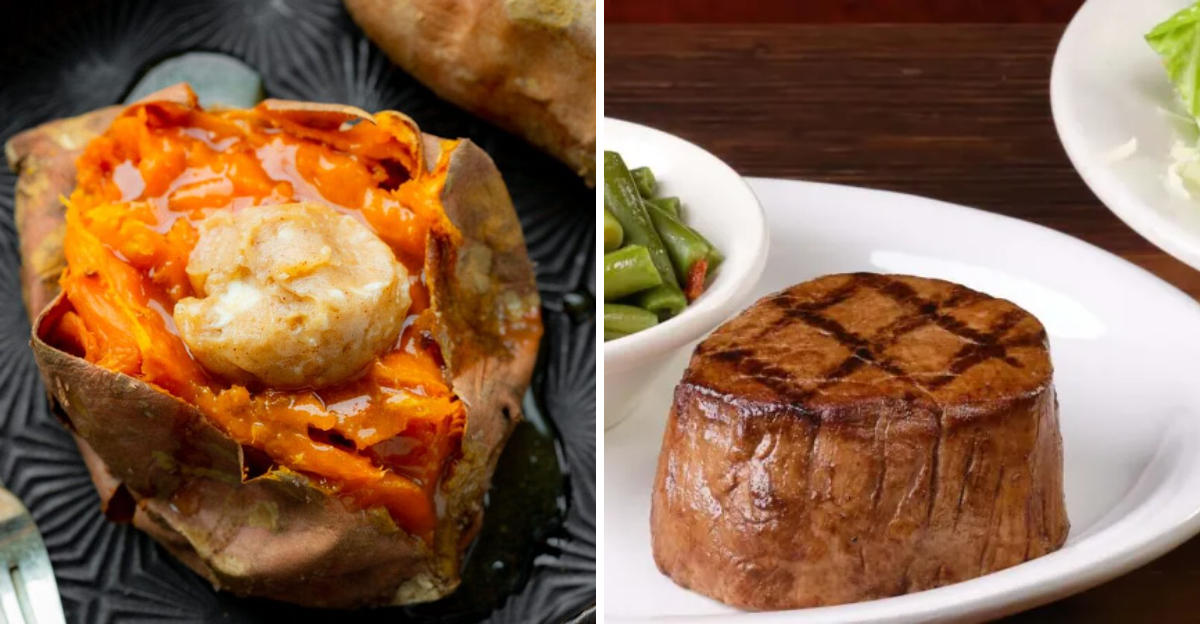20 Vegetables You Should Steer Clear Of Eating Raw
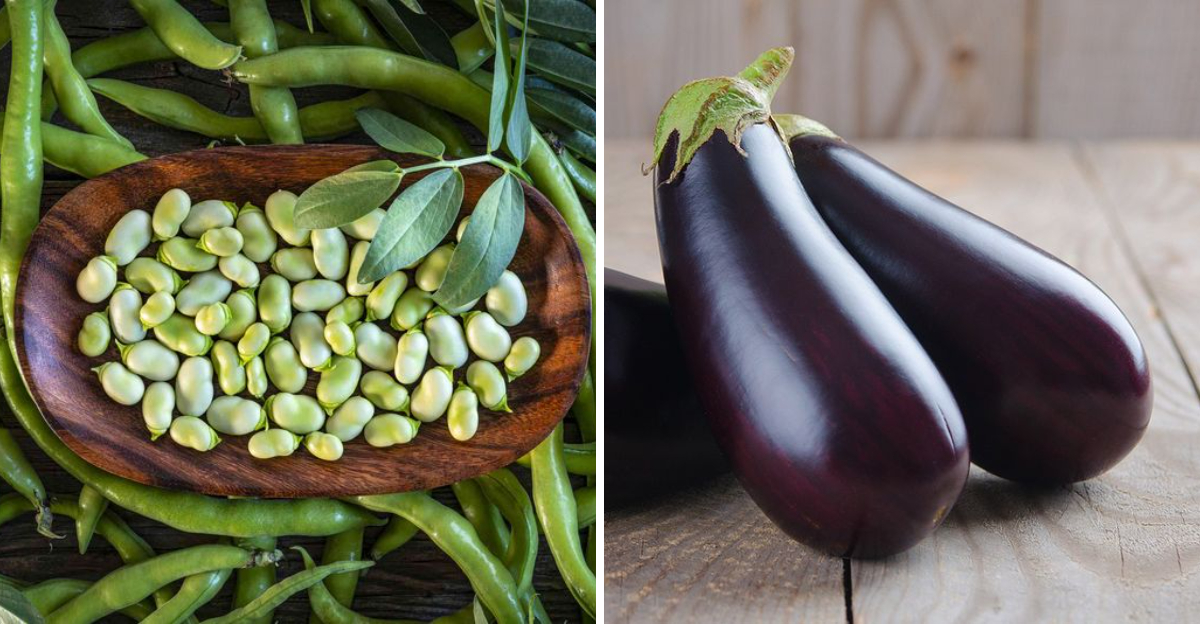
Raw vegetables seem virtuous, but some harbor hidden hazards when uncooked. From tough antinutrients to sneaky toxins, a few favorites can irritate your gut, sap minerals, or even trigger foodborne illness.
Before you load that salad bowl, learn which veggies demand a little heat to become safer and more digestible. This quick guide could save your stomach—and elevate your kitchen confidence.
1. Potatoes
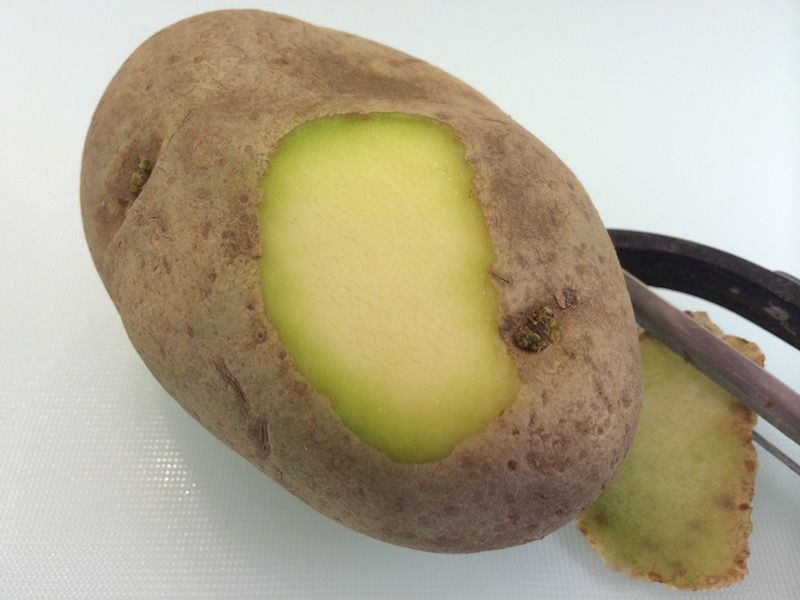
Raw potatoes contain solanine and chaconine, natural glycoalkaloids that can irritate the gut and cause nausea or neurological symptoms when consumed in sufficient amounts.
Green-tinged or sprouted potatoes are particularly risky because alkaloid levels rise with light exposure and stress. Their resistant starch also challenges digestion when uncooked, potentially leading to bloating.
Cooking—especially boiling or baking—reduces these compounds to safer levels and softens the starch for easier absorption.
Always trim green areas and avoid heavily sprouted tubers. When in doubt, cook potatoes thoroughly for flavor, safety, and nutritional availability.
2. Kidney Beans (Red)

Raw or undercooked red kidney beans contain high levels of phytohaemagglutinin, a lectin that can cause severe gastrointestinal distress with just a few beans.
Symptoms typically include nausea, vomiting, and cramping within hours. Soaking beans and boiling vigorously for at least 10 minutes denatures the lectin and renders them safe.
Slow cookers may not reach adequate initial temperatures, so pre-boil before simmering. Canned kidney beans are already cooked and safe to use.
Avoid tasting soaked but uncooked beans, and discard soaking water to further reduce problem compounds.
3. Cassava (Yuca)
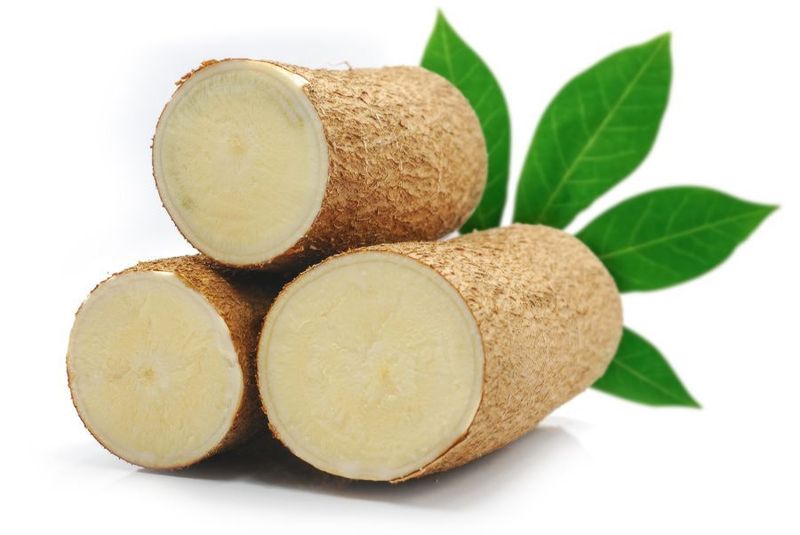
Cassava contains cyanogenic glycosides that can release hydrogen cyanide when improperly prepared. Bitter varieties are especially high and must be peeled, soaked, and thoroughly cooked to reduce toxins.
Eating cassava raw or undercooked increases risk of acute poisoning and, with chronic exposure, neurological issues. Traditional methods like grating, fermenting, and prolonged boiling or baking help break down harmful compounds.
Cassava flour and tapioca are processed forms generally safe when sourced from reputable producers. If preparing fresh roots at home, follow established preparation steps meticulously to keep this staple safe and nutritious.
4. Eggplant (Aubergine)
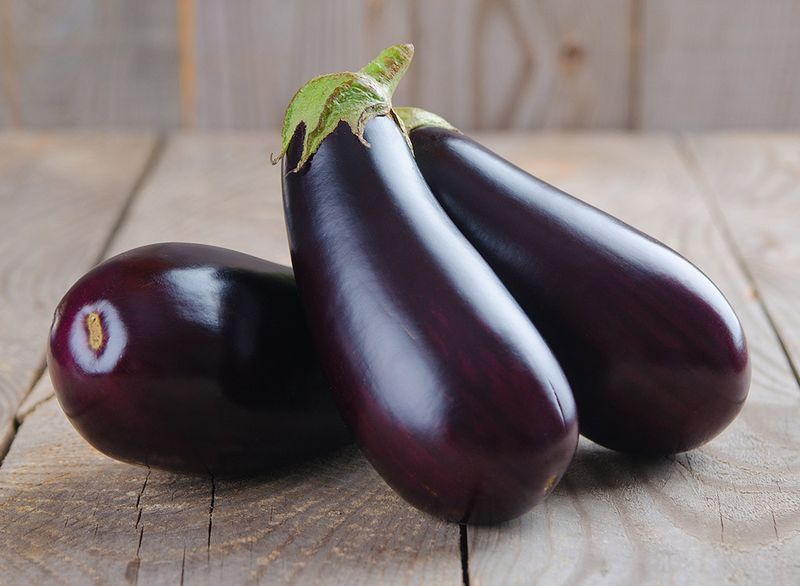
Like potatoes, raw eggplant contains small amounts of solanine and other bitter alkaloids that can irritate sensitive stomachs. While typical portions aren’t highly toxic, raw slices can taste astringent and may cause mild digestive upset.
Cooking—grilling, roasting, or sautéing—reduces bitterness and improves texture by collapsing spongy cell walls. Salt-and-rest techniques draw out moisture and compounds that contribute to harsh flavors.
Heat also enhances antioxidant availability, making dishes more enjoyable and nutritious. If you crave crunch, lightly char thin slices instead of eating them raw. Your palate and gut will thank you.
5. Taro Root
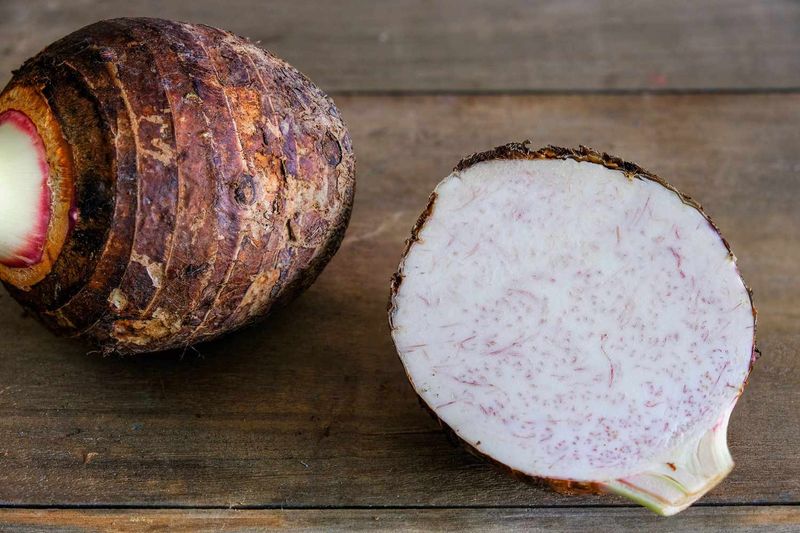
Taro contains calcium oxalate crystals—needle-like raphides—that can cause sharp mouth and throat irritation if consumed raw. Some varieties also harbor heat-labile antinutrients.
Proper preparation involves thorough peeling and cooking, typically boiling or steaming until fully tender, which neutralizes irritants and improves digestibility. Coconut milk curries and taro mash showcase its creamy potential once cooked.
Handling raw taro with gloves can prevent skin itchiness. Discard cooking water and avoid tasting undercooked pieces. When treated right, taro transforms from a prickly risk into a satisfying, starchy staple with gentle, nutty flavor.
6. Bamboo Shoots
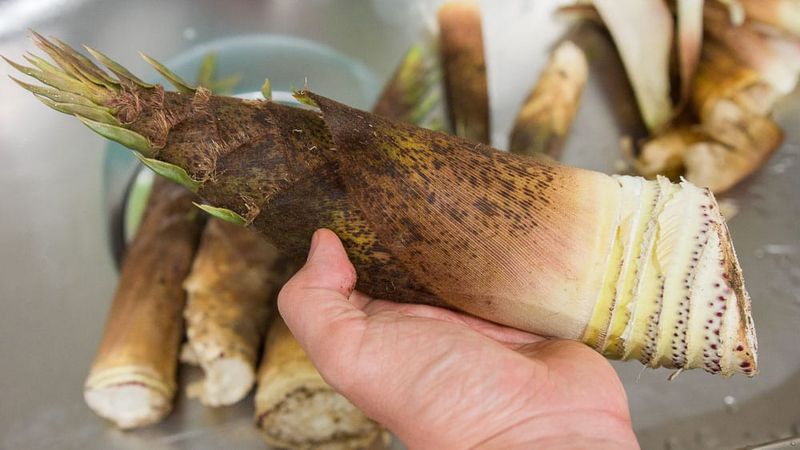
Fresh bamboo shoots can contain cyanogenic glycosides that release cyanide when chewed or improperly prepared. Parboiling or boiling with the first water discarded is essential to make them safe.
Canned shoots are pre-cooked and typically low-risk. Raw consumption may cause headaches, dizziness, or gastrointestinal upset. Traditional blanching techniques also mellow bitterness and firm up texture.
Slice shoots thinly to ensure heat penetrates evenly. Once cooked, they add crisp bite to stir-fries and soups. Avoid tasting raw slices, and always follow regional preparation guidance for the specific species you purchase.
7. Yardlong Beans (Under-cooked)

Though often eaten quickly stir-fried, yardlong beans should not be consumed raw due to potential bacterial contamination and lectins present in many legumes.
Brief high-heat cooking reduces these concerns while preserving crispness. Raw pods can also be tough and gassy for some people.
Wash thoroughly, then sauté, steam, or blanch until bright-green and tender-crisp. Pairing with aromatics and a splash of acid further aids digestibility.
If you enjoy them in salads, blanch first and chill. Treat them like green beans: a little heat goes a long way toward safety and flavor.
8. Lima Beans
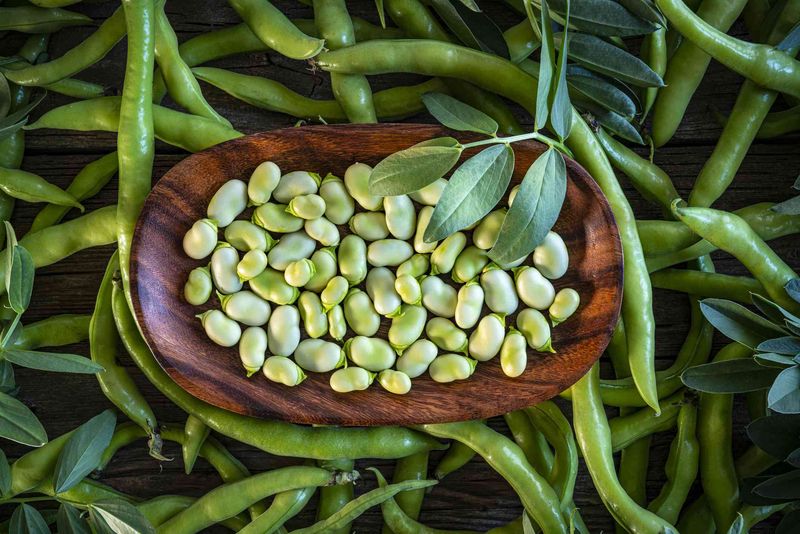
Some lima bean varieties contain linamarin, a cyanogenic glycoside that can produce hydrogen cyanide when raw. Proper soaking and boiling drive off volatile cyanide and reduce antinutrients.
Never eat raw or barely cooked lima beans; discard soaking and first cooking water for extra precaution. Cooking also softens tough fibers that can cause bloating. Choose reputable sources and avoid varieties intended solely for ornamental use.
Canned lima beans are pre-cooked and safe out of the can. With adequate heat, they become creamy, mild, and nourishing rather than risky.
9. Broccoli (In Excess, Raw)
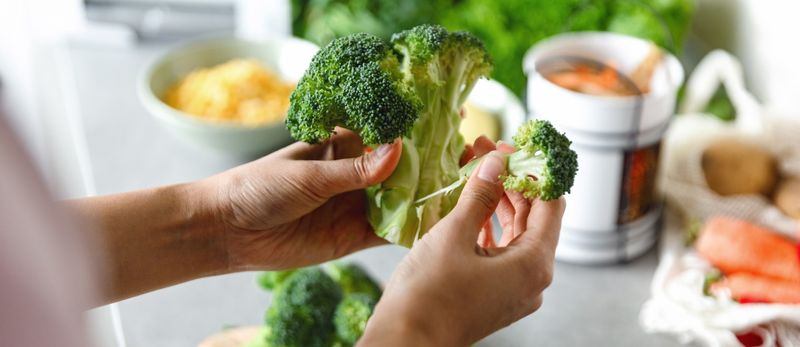
Raw broccoli is nutritious, but large amounts can irritate sensitive digestion due to goitrogens and tough insoluble fibers. Light steaming preserves sulforaphane while improving tenderness and reducing gas.
Cooking also helps deactivate some enzyme inhibitors that may hinder mineral uptake. If you love crunchy florets, briefly blanch them and serve with a vinaigrette. People with thyroid concerns should avoid excessive raw brassicas and rotate their greens.
A balance of raw and cooked servings provides benefits without discomfort. Moderation and quick heat treatments make broccoli easier on the gut.
10. Cauliflower

Raw cauliflower can be hard to digest for many, thanks to raffinose sugars and dense cellulose that ferment in the gut and cause bloating.
Brief steaming or roasting breaks down fibers and mellows sulfurous notes while keeping nutrients largely intact.
Cooking also reduces goitrogenic compounds that may interfere with iodine in susceptible individuals.
For salads, try lightly blanching florets and shocking in ice water to retain crunch without the digestive downside.
Season with acid and herbs to brighten flavor. A bit of heat makes cauliflower kinder to your stomach.
11. Brussels Sprouts
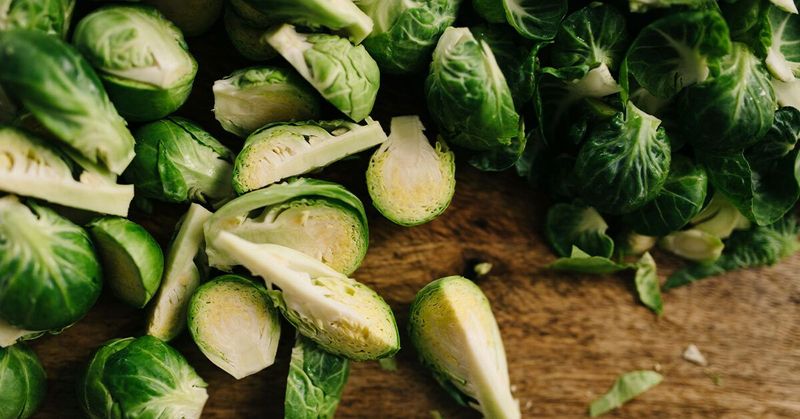
Raw Brussels sprouts are dense and loaded with sulfur-containing glucosinolates and fibers that can trigger gas and bitterness. Shaving them thin reduces toughness, but light cooking works better to tame their assertive profile.
Roasting or sautéing caramelizes natural sugars, boosting sweetness while softening indigestible components. Quick steaming also preserves vitamin C and beneficial compounds.
For salads, blanch briefly and dress with lemon to cut any lingering harshness. People with thyroid concerns should moderate raw intake. With a little heat, sprouts turn from stubborn to sublime.
12. Spinach (Raw Oxalates)
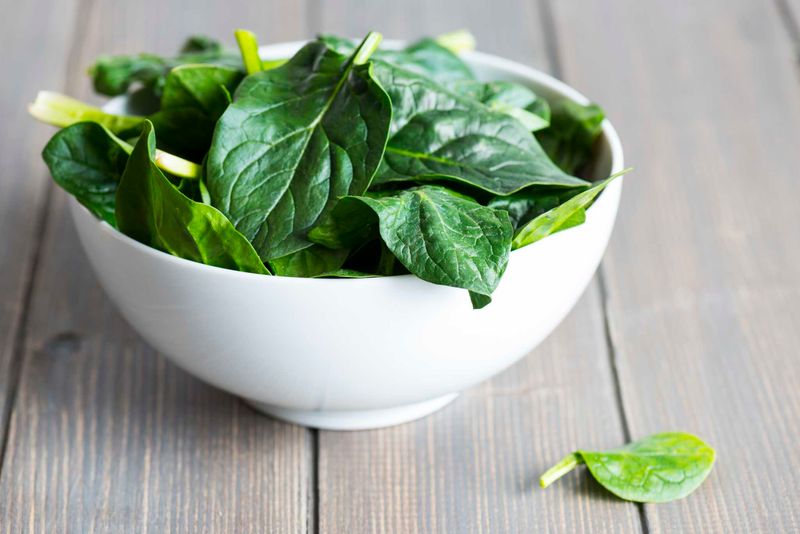
Spinach is often eaten raw, but its high oxalate content can bind calcium and contribute to kidney stone risk in susceptible individuals. Light cooking reduces oxalates and boosts bioavailability of certain nutrients like lutein.
Wilt spinach briefly or blanch and squeeze to remove excess water for smoother digestion. Pairing with dairy or calcium-rich foods can offset oxalate binding. Rotate greens—like romaine or arugula—to diversify nutrients and minimize issues.
If you’ve had calcium oxalate stones, favor cooked spinach and moderate portions. Flavor improves too, with less metallic astringency.
13. Rhubarb Leaves (Never Raw)

While rhubarb stalks are edible when cooked, the leaves contain high concentrations of oxalic acid and other compounds that can be toxic. Never eat rhubarb leaves raw or cooked; discard them immediately after trimming.
Even small amounts may cause mouth irritation, nausea, or more serious symptoms in extreme cases. Always use only the colorful stalks, and cook them with sugar or fruit to balance tartness.
If gardening, keep pets and children away from discarded leaves. When in doubt, consult plant identification guides before experimenting in the kitchen.
14. Wild Mushrooms (Certain Species)

Some edible mushrooms are safe raw, but many, including morels and certain boletes, can cause gastrointestinal upset or worse when uncooked. Wild species may harbor heat-labile toxins and are frequently contaminated with microbes.
Proper identification and thorough sautéing or boiling are essential. Avoid sampling raw during foraging or prep. Cooking improves digestibility by breaking chitinous cell walls and enhances flavor dramatically.
When in doubt, treat all wild mushrooms as cook-only and seek expert guidance. Culturally trusted methods and adequate heat keep mushroom meals both delicious and safe.
15. Green Beans (Under-cooked)
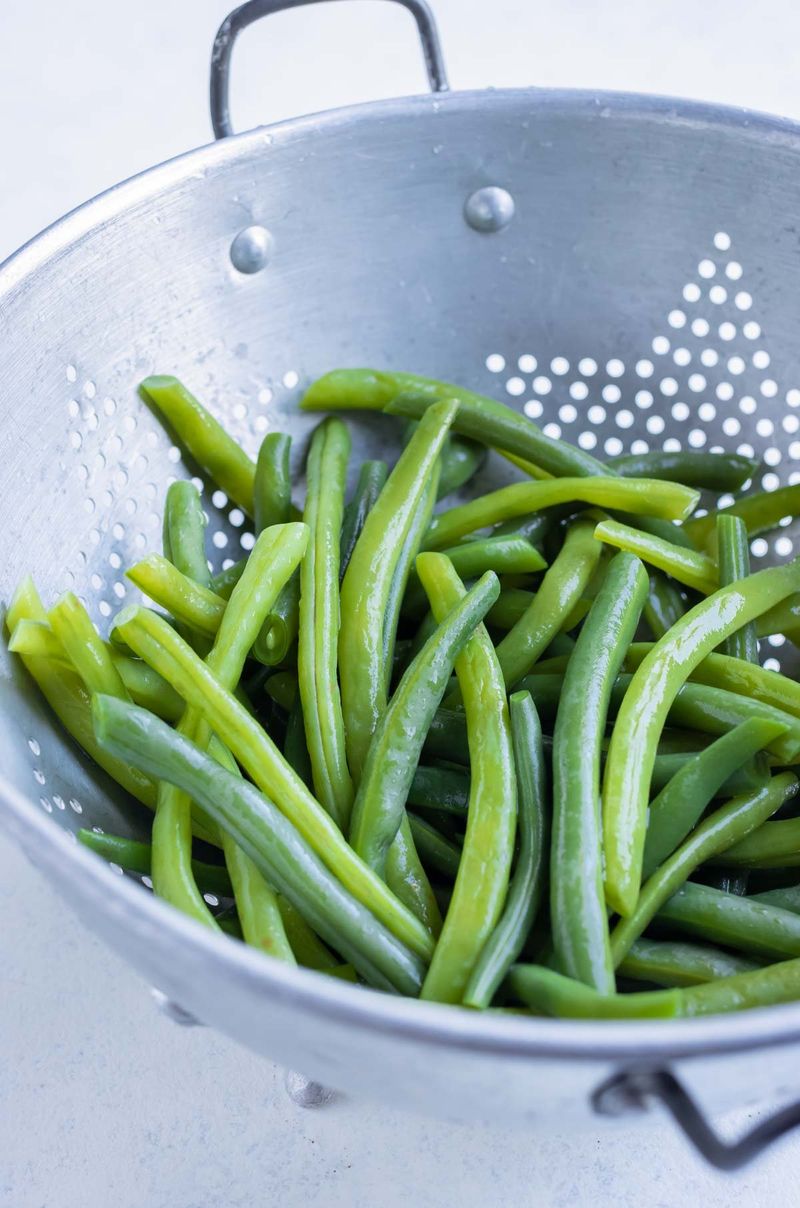
Raw green beans contain lectins that may irritate the gut and interfere with nutrient absorption. Though levels are lower than in red kidney beans, it’s best to blanch or sauté them until tender-crisp.
Cooking reduces lectins and tough fibers, making beans sweeter and easier to digest. For salads, quickly blanch and chill to preserve snap and color.
Avoid long raw snacking if you’re prone to bloating. Simple heat transforms a squeaky chew into a pleasant bite. Canned beans are pre-cooked and generally safe straight from the tin.
16. Sweet Potatoes (Raw, Hard to Digest)

Raw sweet potatoes are fibrous and starchy, making them tough on digestion and less flavorful. Cooking activates enzymes that enhance sweetness and softens complex carbohydrates for better absorption.
Roasting, steaming, or microwaving also improves beta-carotene bioavailability. Raw spiralized strands may seem trendy, but they can cause bloating in sensitive eaters.
If using in salads, lightly blanch ribbons to maintain texture with improved digestibility. A brief cook unlocks their creamy, dessert-like notes.
Your gut and taste buds will appreciate the upgrade from raw crunch to tender caramelized goodness.
17. Corn (Field/Dry)

Raw field or dried corn kernels are extremely hard and packed with resistant starch that’s difficult to digest. Traditional nixtamalization or thorough cooking breaks down tough cell walls, improves amino acid availability, and releases niacin.
Eating raw dried kernels risks dental damage and gastrointestinal discomfort. Even sweet corn benefits from quick cooking to reduce potential microbes and enhance flavor.
If making salads, blanch kernels briefly after cutting from the cob. For masa, follow proper alkaline treatment steps. Heat and processing transform corn from indigestible to nourishing and delicious.
18. Okra

Raw okra can be slimy and contains lectins and fibers that some people find hard to tolerate. Quick cooking methods—stir-frying, grilling, or stewing—reduce mucilage and potential gastrointestinal irritation.
Acidic ingredients like tomatoes or vinegar help control slime and improve flavor. Blanching before adding to salads provides crunch without the goo.
Washing and drying thoroughly before high-heat cooking also helps. While small raw amounts aren’t typically dangerous, many enjoy okra more after a short cook. You’ll get tenderness, better seasoning absorption, and a more pleasant eating experience.
19. Beets
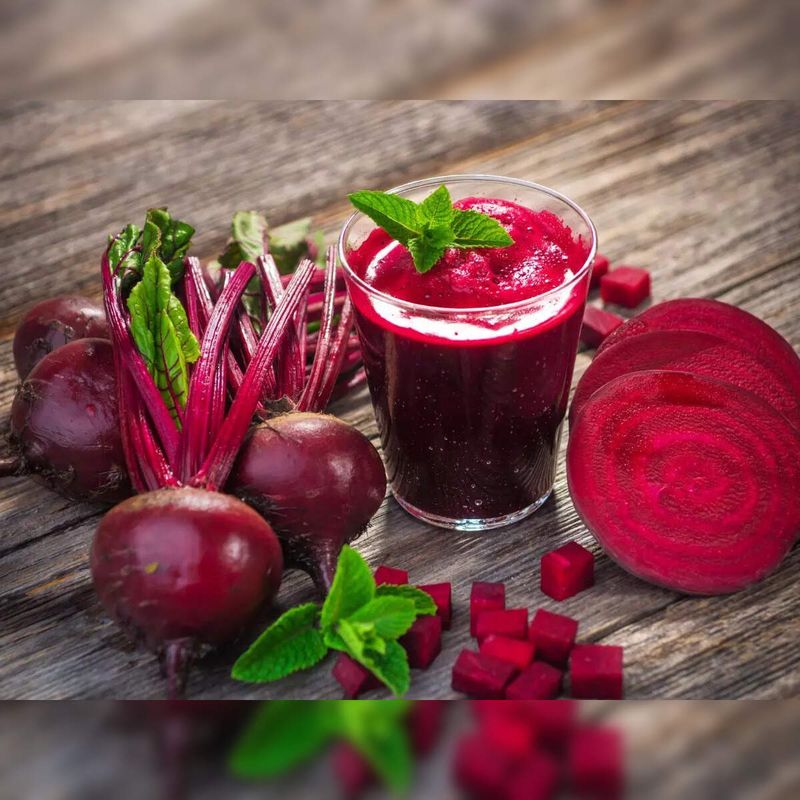
Raw beets are earthy and fibrous, and their oxalate content can be problematic for those prone to kidney stones. Cooking softens tough fibers, aiding digestion and making natural sugars more pronounced.
Roasting concentrates sweetness, while steaming preserves nutrients. If using in salads, grate finely and marinate to tame raw bite. People with sensitive stomachs may experience bloating from raw beet cellulose.
Cooking also enhances betalain stability in some preparations. Enjoy the greens sautéed as well; they’re flavorful once wilted and easier on the gut than raw roots.
20. Swiss Chard

Swiss chard, like spinach, is high in oxalates that can bind minerals and irritate stone-prone individuals when eaten raw frequently. Light sautéing or steaming reduces oxalate load and softens strong earthy notes.
Cooking also shrinks the voluminous leaves, making portions more reasonable and digestible. Pair with lemon or yogurt to balance flavors and assist mineral absorption.
Rotate your greens to diversify nutrients. If you enjoy raw ribbons in salads, keep portions modest and mix with low-oxalate lettuces. A quick wilt brings out chard’s savory sweetness beautifully.





